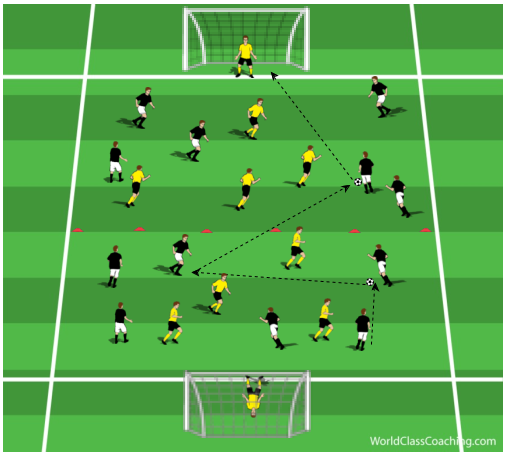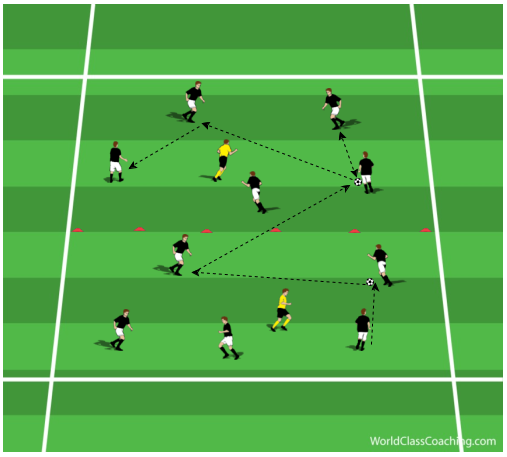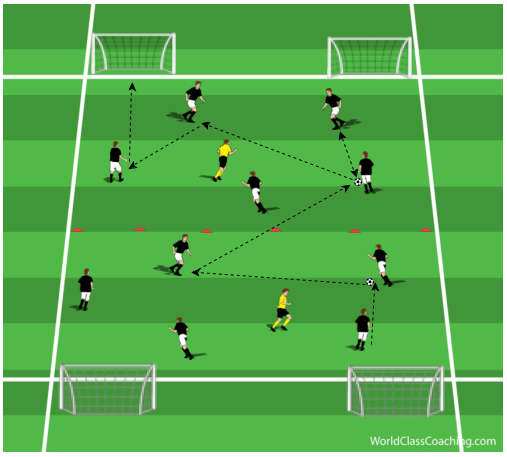By Gabriel Celante
This drill will work on individual and group decision making about where to play the ball, holding possession, and completing a series of passes. This drill also emphasizes switching the point of attack and quickly transition play.
Organization
1. Set up the field as shown on the diagram.
2. Split the field in two halves
3. Split the teams in 2 groups of 5v1, 5v2 or 4v2
Instructions
The team that starts the ball has to make 5 passes and then switch the ball to the other half. The team in the opposite half will receive the ball, combine 5 passes and switch the ball to the other half again. When a defender steals the ball twice (or only once), he switches position with whoever made a mistake (from the attacking team). Each team has two attempts, either to transfer the ball to the other half or to try to score.
Variation 1
Same idea than the above example, but when a team receives a ball from the other half, the players have to put minimum 3 passes together before scoring.
If you want to focus on switching the point of attack, you can add a rule. If a goal is scored by switching the point of attack, the goal worth double.
Variation 2
Progress to 6v3 or 7v5.
Add regular goals and Goalkeepers in each half.
Same idea than the above example. However, when a team receives a ball from the other half, the players can score at any moment (don’t have to put any amount of passes together). If the defenders steal the ball, they have to switch the ball to their teammates in the other half as fast as possible. It will make the attacking team to try to regain the ball possession as fast as they can (high pressure). If this task is completed, a point is earned to the defending team.
[wpsharely id="2988"][/wpsharely]Coaching Points
- Creating and using space
- Movement of angle and supporting play
- Verbal and Visual communication
- Speed of Play and Thought
- Correct body shape is important to see where the next pass can be played
- The defending team needs to press the ball collectively in order to win the ball (high pressure)
- When a ball is intercepted, the attacking team needs to perform fast in order to get the ball back and offer support
- Quality of passing
- Quickly transition
By Gabriel Celante. Celante has worked at Ituano Futebol Clube and E.C. XV Piracicaba, two professional clubs in his native Brazil as a soccer conditioning specialist. Celante now works for BRASA (Brazilian Soccer Academy) in NJ.





